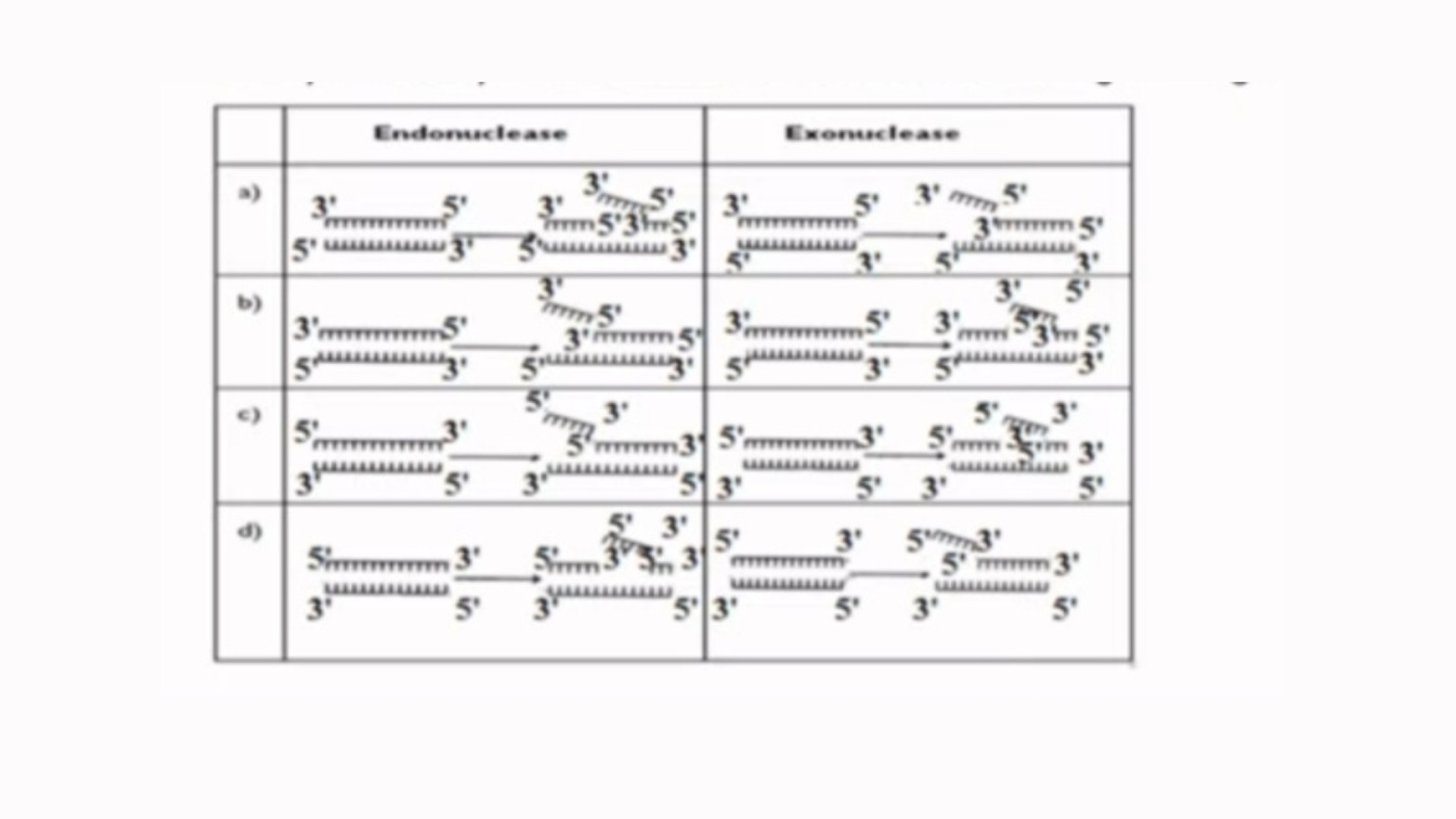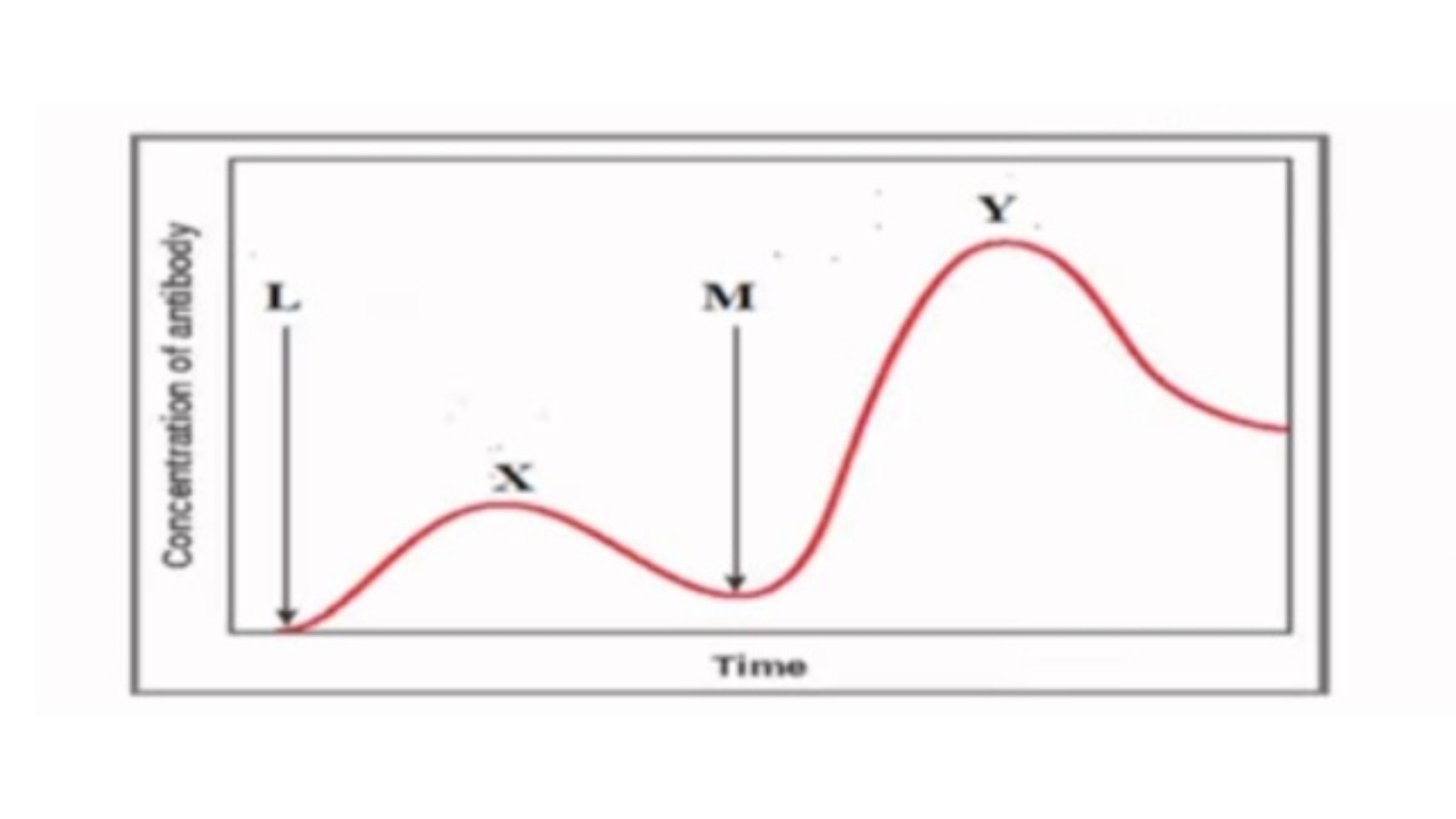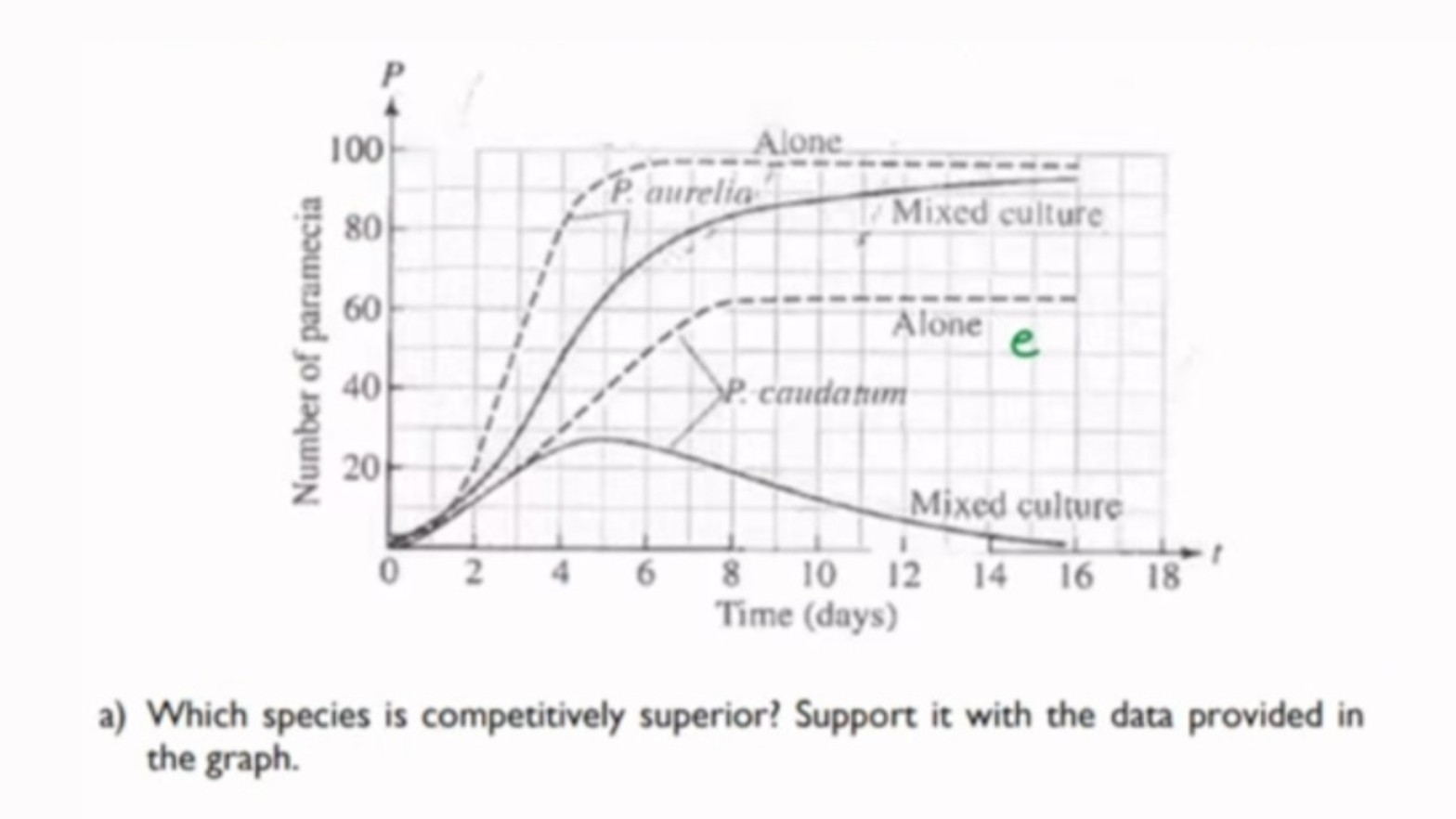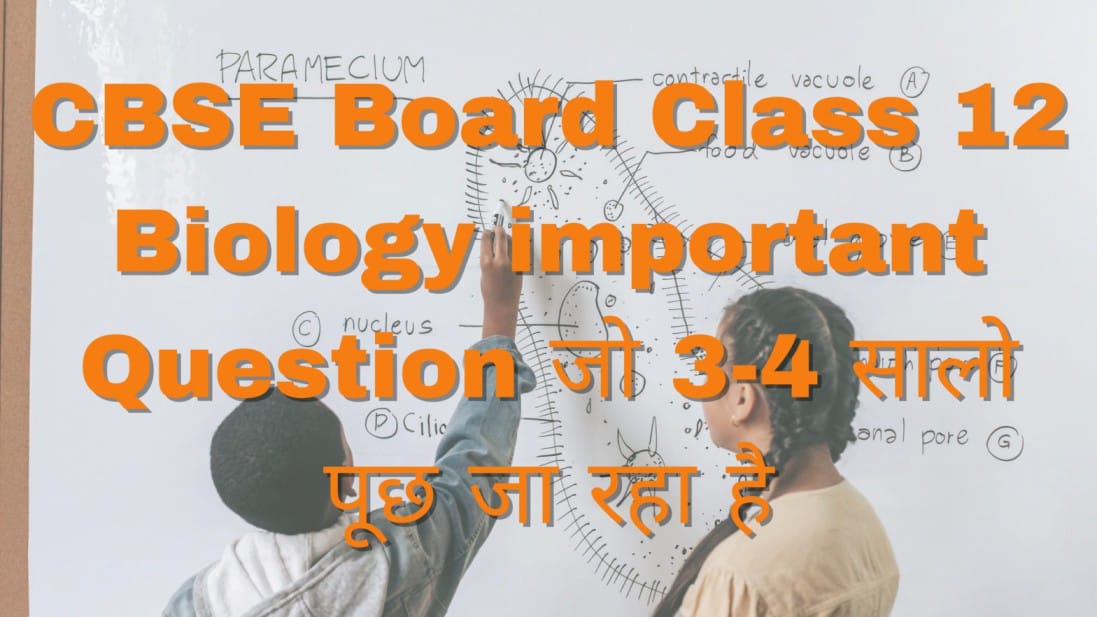CBSE Board Exams are starting in February. So, I have brought CBSE Board Class 12 Biology Important Questions 2024 which are being asked the same for last 3-4 years. Try to solve these questions for securing high marks in your board examinations.
You can also check the Important Questions for Physics, Chemistry, English and Other Subjects.
CBSE Board Class 12 Biology Important Questions 2024: Objective
1. Remnants of nucellus are persistent during seed development in:
(a) pea
(b) groundnut
(c) wheat
(d) black pepper
2. The wall layer of microsporangium which nourishes the pollen grain is:
(a) epidermis
(b) endothecium
(c) middle layers
(d) tapetum
3. In a certain species of insects, some have 13 chromosomes, and the others have 14chromosomes. The 13 and 14 chromosome bearing organisms are.
(a) males and females, respectively
(b) females and males, respectively
(c) all males
(d) all females
4. At a particular locus, the frequency of allele A is 0.8 and that of allele a is 0.2. What would be the frequency of heterozygotes in a random mating population at equilibrium?
(a) 0.32
(b) 0.16
(c) 0.24
(d) 0.48
5. Variations caused due to mutations are.
(a) random and directionless
(b) random and directional
(c) random and small
(d) random, small and directional
6. What is the smallest part of a DNA molecule that can be changed by a point mutation?
(a) Oligonucleotide
(b) Codon
(c) Gene
(d) Nucleotide
7. A patient was advised to have a kidney transplant. To suppress the immune reaction, the doctor would administer him:
(A) statins produced from Monascus purpureus
(B) statins produced from Streptococcus thermophilus
(C) cyclosporin A produced from Trichoderma polysporum
(D) cyclosporin A produced from Clostridium butylicum
8. Identify the activity of endonuclease and exonuclease in the given image.


9. The main objective of production of pest resistant GM crops is to.
(a) encourage eco-friendly pesticides
(b) reduce pesticide accumulation in food chain
(c) eliminate pests from the field without the use of manual labour
(d) retain maximum nutritional content in the crop that would be otherwise consumed by pest
10. Klinefelten syndrome has the genetic make up
(a) 44 autosomes + xxy
(b) 44 autosomes + xo
(c) 45 autosomes + xx
(d) 45 autosomes + xy
11. How many autosomes does a human primary spermatocyte have?
(a) 34
(b) 44
(c) 54
(d) 33
12. Endosperm is meant for.
(a) protection
(b) transduction
(c) nourishment
(d) respiration
13. Pollen grains are well preserved as fossils because of presence of.
(A) sporopollenin
(B) cellulose
(C) lignocellulose
(D) pectocellulose
14. Which of the following statements are correct with respect to hormones secreted by placenta?
(i) Placenta secretes relaxin during later stage of pregnancy.
(ii) Placenta secretes high amount of FSH during pregnancy.
(iii) Placenta secretes relaxin during initial stage of pregnancy.
(iv) Placenta secretes hCG and hPL during
pregnancy.
A. (i) and (iv)
B. (i), (ii) and (iv)
C. (iii) and (iv)
D. (ii), (iii) and (iv)
15. Penetration of the sperm in the ovum is followed by.
(A) formation of first polar body.
(B) completion of meiosis
(C) first meiosis.
(D) dissolution of zona pellucida.
16. The correct sequence of hormone secretion from beginning of menstruation is.
(A) FSH, progesterone, estrogen.
(B) estrogen, FSH, progesterone.
(C) FSH, estrogen, progesterone.
(D) estrogen, progesterone, FSH.
17. The thalamus contributes to the fruit formation in.
(A) banana.
(B) orange.
(C) strawberry.
(D) guava.
18. How many types of gametes would be produced if the genotype of a parent is AaBB?
(A) 1
(B) 2
(C) 3
D) 4
19. Which of the following amino acid substitution is responsible for causing sickle cell anemia?
(A) Valine is substituted by Glutamic acid in the a globin chain at the sixth position
(B) Valine is substituted by Glutamic acid in the ẞ globin chain at seventh position
(C) Glutamic acid is substituted by Valine in the a globin chain at the sixth position
(D) Glutamic acid is substituted by Valine in the ẞ globin chain at the sixth position
20. In human beings, where genotype AABBCC represents dark skin colour, aabbcc represents light skin colour and AaBbCc represents intermediate skin colour; the pattern of genetic inheritance can be termed as:
(A) Pleiotropy and codominance
(B) Pleiotropy and incomplete dominance
(C) Polygenic and qualitative inheritance
(D) Polygenic and quantitative inheritance
21. Which of the following combination of chromosome numbers represents the correct sex determination pattern in honey bees?
(A) Male 32, Female 16
(B) Male 16, Female 32
(C) Male 31, Female 32
(D) Female 32, Male 31
22. What is the pattern of inheritance in the above pedigree chart?
(A) Autosomal dominant
(B) Autosomal recessive
(C) Sex -linked dominant
(D) Sex -linked recessive


23. Total number of nucleotide sequences of DNA that codes for a hormone is 1530. The proportion of different bases in the sequence is found to be Adenine = 34%, Guanine = 19%, Cytosine = 23%, Thymine = 19%. Applying Chargaff’s rule, what conclusion can be drawn?
(A) It is a double stranded circular DNA.
(B) It is a single stranded DNA.
(C) It is a double stranded linear DNA.
(D) It is a single stranded DNA coiled on Histones.
24. If Meselson and Stahl’s experiment is continued for sixth generations in bacteria, the ratio of Heavy strands 15N/15N :Hybrid15N/14N : light 14N/14N containing DNA in the sixth generation would be
(A) 1:1:1
(B) 0:1:7
(C) 0:1:15
(D) 0:1:31
25. A procedure that finds use in testing for genetic disorders, but is also misused for foeticide is:
(a) Lactational amenorrhea
(b) Amniocentesis
(c) Artificial insemination
(d) Parturition
CBSE Board Class 12 Biology Important Questions 2024: Subjective
1. The graph given below indicates the administration of the first (L) and second dose (M) of a vaccine. The corresponding response of the body is indicated by X and Y. Interpret the graph and explain the reason for such a response shown by the body.


2. Biomass of a standing crop of phytoplankton is 4 kg/m² which supports a large standing crop of zooplankton having a biomass 11 kg/m². This is consumed by small fishes having biomass 25 kg/m² which are then consumed by large fishes with the biomass 37 kg/m². Draw an ecological pyramid indicating the biomass at each stage and also name the trophic levels. Mention whether it is an upright or inverted pyramid.
3. Explain the phases in embryonic development from the morula stage till the establishment of pregnancy in a human female.
4. A pregnant human female was advised to undergo MTP. It was diagnosed that the fetus she was carrying had developed from a zygote having 45 chromosomes with only one X chromosome.
(a) What is this condition called and how does it arise?
(b) Why was she advised to undergo MTP?
5. A farmer grew 2 varieties of corn crop in field A and B. He grew normal corn crops in field A and GM corn crops in field B. He observed corn borers attacked only in field A. To control it, spores of Bt were sprayed in field A.
(a) Name the gene in the spores responsible for the control of this pest.
(b) What effect will the spores of Bt have on the insect pest?
(c) How has field B developed resistance against this pest?
6. Lipoprotein lipase deficiency (LPLD) is a genetic disorder in which a person has a defective gene for lipase. This leads to high triglycerides, stomach pain, fat deposits under the skin. It may eventually affect the liver, pancreas and may also cause diabetes. The disorder occurs if a child acquires defective genes from both parents (autosomal recessive). ERT (enzyme replacement treatment) is one of the treatments offered to patients with LPLD.
a) (i) What procedure is followed in ERT?
(ii) What could be one possible drawback of ERT?
(b) How can LPLD be treated using Biotechnology? Elaborate.
7. Observe the graph given below.
The graph represents inter-specific interaction between two species of Paramecia competing for the same resource in a culture medium. Paramecium caudatum and Paramecium aurelia were grown in separate cultures as well as in mixed cultures. It was found that each species grew in numbers according to the logistic equation.


8. Explain the role of Primary and Secondary Lymphoid organs with the help of suitable examples.
9. The figure given below shows 3 sperms A, B and C.
(a) Which one of the three sperms will gain entry into the ovum?
(b) Describe the associated changes induced by it on P and Q.


10. Assertion: Smoking can raise blood pressure and increase heart rate. Reason: Nicotine stimulates adrenal glands to release adrenaline and nor- adrenaline into the blood circulation, both of which raise blood pressure and increase heart rate.

